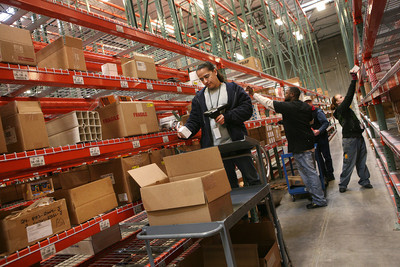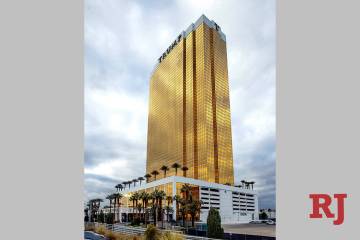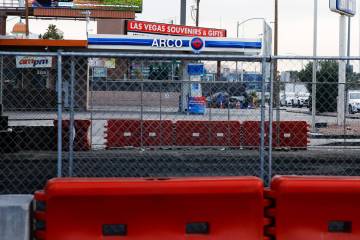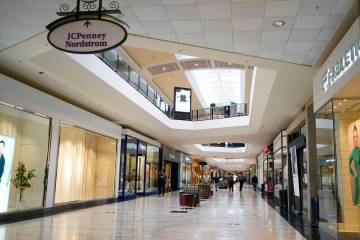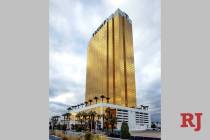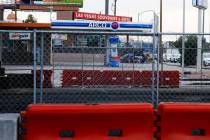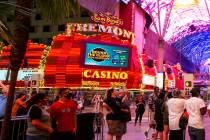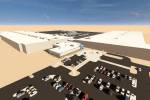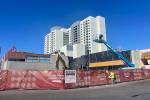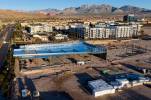Industrial-space vacancy rises
Landlords, developers and tenants alike are "cautious yet optimistic" about the Las Vegas industrial market in 2008, an industrial broker from Grubb & Ellis said Wednesday.
Industrial vacancy has been creeping up steadily in Las Vegas since 2006, reaching 6.2 percent in the fourth quarter for 93.2 million square feet of total space, Grubb & Ellis reported.
Toward the end of 2007, vacancy rose in almost every submarket. The northwest had the highest vacancy at 31.6 percent, followed by Henderson (8.2 percent) and east Las Vegas (7.8 percent).
Although the industrial market is perhaps the most challenging in Las Vegas, it's expected to stabilize in the months to come, Grubb & Ellis Senior Vice President Xavier Wasiak said.
Every commercial sector is facing difficulty, but industrial is probably hurting the least, he said.
"It's relative to the type of product. Larger, big-box distribution is probably doing the best because we just don't have that much available," Wasiak said. "That's a direct result of the increase in land prices in the last few years."
Fourth-quarter average asking rent was $10.37 a square foot per year triple-net, not including maintenance and utility costs. Warehouse and distribution space was lowest at $7.58 a square foot; research and development was highest at $12.91 a square foot.
Dan Hogan, western region distribution manager for Johnstone Supply, a Portland, Ore.-based distributor of heating, ventilation and air conditioning equipment, said he needed a specific type of building to expand the company's operations in Las Vegas, something with ceiling heights that would allow "lift picks" and a rectangular shape where the distance from the dock to the wall on the other side isn't more than 250 feet away.
"In the Vegas market, it's pretty tough to find a building," Hogan said. "We looked at a lot of sites from an efficiency standpoint, size and price. You don't want to have far to go to pick the product. We look at the cost of labor per item pick."
Johnstone took 130,000 square feet at Cheyenne Industrial Center, a Panattoni development in North Las Vegas. Wasiak of Grubb & Ellis said the center was quick to lease or sell its four buildings totaling just less than 500,000 square feet. Home Depot Supply is also a tenant there.
Demand for industrial space will continue to increase in Las Vegas, but that demand has shifted from companies outside the market to local industries that are supplying Strip development, Wasiak said.
Net absorption, or the amount of new space being leased, totaled nearly 1.7 million square feet in the fourth quarter and 5.4 million square feet for all of 2007.
Restrepo Consulting Group, which tracks commercial market performance for Colliers International in Las Vegas, reported 6.1 percent vacancy for 99.4 million square feet of industrial space. Asking rent decreased to 66 cents a square foot from 77 cents in the same quarter a year ago.
Warehouse and distribution space accounted for more than 70 percent of the 2.2 million square feet of new industrial space added during the quarter, research analyst John Restrepo said.
"Warehouse and distribution has generally had the lowest vacancy in previous quarters and has been in high demand," he said. "So while all this space is still in lease-up, we don't think there will be a problem absorbing all this space."
Jeremy Aguero, principal of Applied Analysis, a Las Vegas financial consulting firm, said development opportunities in the industrial sector have "emerged in force" as the overall economy continues to cool and residential development reverses course from two and three years ago.
"This is not to suggest an oversupply condition exists, rather a more balanced mix of activity is likely to prevail, coming off a period of record low vacancies," he said.
Applied Analysis showed 6 percent industrial vacancy for 96.4 million square feet of inventory and average asking rents of 76 cents per square foot.
The vacancy uptick puts the Las Vegas industrial market in "terrific equilibrium," CB Richard Ellis managing director Craig Shute said. Vacancy in other U.S. markets ranges around 9 percent, he said.
Industrial vacancy is up from 5.3 percent in the third quarter and 3.4 percent a year ago. Anything less than 5 percent provides little choice for businesses looking for the right space and location to meet their needs, Shute said.
Contact reporter Hubble Smith at hsmith@reviewjournal.com or (702) 383-0491.



